Finding justice in the stacks
September 11, 2014

Martha Jimenez has used the Law Library to fight legal battles from L.A.'s eastside to Zacatecas, Mexico.
Perhaps no one knows how to use the Los Angeles County Law Library better than Martha Jimenez.
Since her college days at UCLA, the 45-year-old community activist has been taking advantage of the public facility in L.A.’s civic center to research an array of legal topics, from environmental regulations and landlord-tenant laws to city planning issues and Mexican civil procedure.
“This is like the international safe haven to address issues,” Jimenez said.
In the 1990s, she used the library to fight back when the Mexican government tried to take her grandparents’ house by eminent domain. Jimenez researched the relevant statutes and procedures and her family filed suit. In the end, they emerged victorious over the then-governor of Zacatecas.
“The governor did not know how to write his court document,” Jimenez said. “It was here that I learned that process.”
More recently, Jimenez used the library to protect her local community of City Terrace on the eastside from becoming a waste storage site for the City of Santa Clarita and a private trash hauler. After researching environmental regulations, she appealed to the City of L.A. and the Sanitation Districts of L.A. County. Again, she won.
“I empowered my community and collected 5,000 signatures,” Jimenez said. “We organized and said, ‘You cannot come into our community.’ And they stopped.”
Jimenez is one of an increasing number of self-represented litigants who’ve discovered the L.A. Law Library, said Sandra Levin, the library’s executive director. Since taking the position 19 months ago, Levin estimates that daily attendance has risen about 50%, from 200 to 300 people per day.
“I told my board that my goal is to come with a request to replace the carpet because we wore it out,” Levin said.
Hiring a lawyer simply isn’t an option for a growing segment of the population, Levin said. She and her librarians want to bridge the resulting gap in access to justice.
“There’s a real crisis right now in our society and our courts because many people are faced with legal issues and can’t afford representation. Most average citizens don’t know where to turn,” Levin said, adding that about 70% of litigants in family law cases now do not have attorneys “and the numbers are growing in basic civil cases, too.”
Over the past few years, the library has made significant upgrades, including a reorganized reference desk and computers, a renovated exterior and a new training center. “It looks totally different than before,” Levin said.
To improve outreach, Levin is offering classes and workshops taught by library staff, attorneys and nonprofit organizations. Topics include how to clear criminal records, researching with online legal databases, preparing for family law trials and how to file for a legal name change. All are provided free or for a small fee, ranging from $10 to $35.
Her reference staff handles the front lines, where people come in with all sorts of legal problems. Among the most common are evictions, divorces and child custody matters. Others, like the man who sued a boating company after being left out at sea for 12 hours, require digging a bit deeper into the public collection, the second largest in the United States after the Library of Congress.
Levin recalls two parents who came in because their child’s school wouldn’t allow them to visit during the day. “They wanted to see the school in operation and check on their child,” Levin said. “The librarians here helped them find the statute that says that you have a right to go into a public school to see your child.”
Ralph Stahlberg, the head reference librarian, remembers one homeless man who filed a lawsuit against the police for taking his belongings. “He came here and got resources,” Stahlberg said. “He fought it and won.”
Neel Agrawal is the research librarian in charge of the global law collection. He said small business owners often show up seeking assistance with the complex legal requirements regarding exporting products, trade routes and other concerns that large businesses typically hire law firms to handle.
Librarians direct their patrons to books written for non-lawyers or, if a visitor is more sophisticated, to more complex reference books. Still others need advice on the basics, like how to address a judge (“your honor,” rather than “sir” or “madam”.)
While unrepresented litigants have been on the rise, the trend was spotted by the State Bar of California back in 1997. In response, the California Commission on Access to Justice was created “to explore ways to improve access to civil justice for Californians living on low and moderate incomes.” Later, the Judicial Council of California—the state’s policymaking body for the courts—formed a Task Force on Self Represented Litigants. In 2004, the task force issued a Statewide Action Plan for Serving Self-Represented Litigants. Central to the plan was the creation of courthouse self-help centers to provide one-on-one assistance with family law and eviction cases.
Business is booming. According to Superior Court spokesperson Mary Hearn, more than 200,000 “incidents of service” have been provided annually during the past few years at centers across the county, including in Santa Monica, San Fernando and Van Nuys. The law library, meanwhile, collaborates with them to identify what kinds of services are most needed.
“The courthouses are wonderful but they have limited scope,” Levin said. “They offer a pretty wide range of family law issues and some landlord-tenant issues, but beyond that there isn’t much assistance.”
Nonprofit organizations like Public Counsel and Legal Aid Foundation of Los Angeles also help people who can’t afford an attorney, but still can’t meet the enormous demand.
The law library also serves people who aren’t facing litigation, as well as those who can afford an attorney. Understanding legal rights in advance can resolve or prevent costly court battles. Levin gives the example of a worker who believes she may have been sexually harassed, but isn’t sure. One hour of research at the library could prevent an unnecessary fight that might damage the person’s career interests.
“Someone has to teach people how to understand their rights, represent themselves in court and do legal research,” Levin said. “That’s what we do.”
Posted 8/14/14
A Grand party—unless you were green
September 11, 2014
The fans were ecstatic and the downtown boosters were declaring victory.
But as Grand Park awoke this week from its most ambitious gathering so far, it was clear that for at least one constituency, last weekend’s Made in America extravaganza was no party.
Ladies and gentlemen, give it up for the poor shrubbery.
Although cleanup crews said this week that the new park rebounded surprisingly well from the 70,000-plus fans who stomped, jumped and danced their way through the Civic Center park over Labor Day weekend, a damage assessment prepared for the county offered the sordid details.
Some 10,000 square feet of lantanas, bougainvillea, aloes, drought-tolerant grasses and other greenery—drawn from around the world to reflect the diversity of L.A.—will have to be pulled out and replaced in the aftermath of the two-day concert. In the section of the park closest to the main stage in front of City Hall, more than 1,500 separate plants, many of which had been growing into maturity for nearly two years, must be replaced.
“The trees weren’t too damaged, but a lot of the plants in the planters were completely smashed and broken,” said Sergio Hernandez, manager at ValleyCrest Cos., the Calabasas-based landscaping contractor that maintains the 12-acre park for the county. “It almost looked like people were standing on some of the shrubs.”
The botanical casualties were estimated by ValleyCrest at about $50,000 park-wide. Hernandez said the new plants will probably take until next spring to reach the same size as they were before concertgoers arrived.
Live Nation, the concert promoter, is contractually obligated to cover the costs of the landscaping and other damage, including the replacement of six thick tiles in the popular Arthur J. Memorial fountain splash pad, which were broken during the construction and tear-down of a stage.
Despite the damage, the event—curated by rapper Jay Z and headlined by such international names as Kanye West, John Mayer and Steve Aoki—won wide praise from its many boosters, including Los Angeles Mayor Eric Garcetti. Among other things, it generated some $600,000 in fees for the county and $500,000 for the city, while showcasing Grand Park as a potential rival to the Coliseum, the Rose Bowl and other signature Southern California gathering spaces.
A spokeswoman for the mayor said his office still is assessing last weekend’s economic impact, but press interviews with downtown merchants indicated that their businesses had gotten a much-needed boost, and park planners said the event, overall, was a net benefit to the public.
“You want the park to be used, and you want it to be used for different things,” said Dawn McDivitt, who managed the development of Grand Park for the county Chief Executive Office before leaving to become chief deputy director of the Natural History Museum of Los Angeles County this year.
“When a big ticketed event actually rents the park, you get not only the side benefit of additional revenue for more public programs, but also the ability to reach a different type and age of audience, who will come down and enjoy other, free, events at the park later.”
But, she added, “a big, ticketed event also can be a concern because the park was established for the public, and you have to make sure that the public will still be able to enjoy it afterward.”
Grand Park officials said that the landscaping should be restored by next week, along with the completion of repairs on the fountain and a damaged irrigation line.
The preliminary assessment, prepared by ValleyCrest, estimated that $38,898 in damage had been caused near the park’s main event lawn, between Broadway and Spring Street.
Irrigation repairs and plant replacement elsewhere in the park will probably cost an additional $14,000, said Christine Frias, a program manager in the CEO’s office who coordinated the county’s Made in America involvement. She said the county was able to keep landscape costs lower by fencing planters that weren’t in the flow of foot traffic.
Grand Park Director Lucas Rivera said that, given the size and scope of the event, the impact was considerably lighter than anyone had anticipated.
“Made in America provided Angelenos with amazing entertainment and put Grand Park on the national stage,” said Grand Park Director Lucas Rivera. “With any event held in a public space, and with the amount of people who attend, there’s always going to be some wear and tear on the venue.”
Posted 9/4/14
Heroism forged in pain
September 11, 2014
Ambyr Rose descended from generations of drug-addicted mothers whose children ended up in the foster care system. She, however, overcame that legacy of abuse and neglect and now helps broken families become whole again.
On Tuesday, Supervisor Zev Yaroslavsky named her the 3rd District’s Family Reunification Hero, citing her work in the Department of Children and Family Services’ Parents in Partnership program.
“Her passion for encouraging others to engage in recovery and to find their way towards reunification with their children is what set her apart,” Yaroslavsky said.
This was the fifth year for the Family Reunification Hero awards, which honor individuals, families, organizations and agencies who’ve made significant contributions towards helping children return to their homes and families. Every year, each member of the Board of Supervisors awards a scroll to the hero chosen for his or her district.
Rose, a 31-year-old Sylmar resident, said her traumatic experiences have strengthened her resolve to restore families torn apart by drug abuse, alcoholism, domestic violence, poverty and other reasons.
“I think the reason I went through everything I did is so that I can help others, make a difference in their lives,” she said. “I truly, honestly, believe that we all have a purpose, and this is mine.”
Rose’s resilience helped her break her family’s cycle of tragedy and despair.
Her grandmother, a heroin addict, killed herself while playing Russian roulette. Her mother, orphaned at a young age, entered foster care and also became hooked on drugs.
Rose bounced around from foster home to foster home until aging out of the system. She also suffered from sexual abuse.
Trying to dull her pain, she reached for the same stuff that ruined her mother and grandmother.
“Crystal meth was my drug of choice but I used anything, really — anything to fill a void, anything to numb myself,” Rose said.
By age 21, she was homeless and the mother of three young children.
“We were sleeping in the stairwells of buildings, in cars, basically any spot that we could find a place,” Rose said. “I hit rock bottom in 2005 when my youngest, who was 18 months old, had pneumonia for the third time and had to be hospitalized.”
She decided to “call DCFS on myself,” prompting social workers to place her children in a foster home in Palmdale.
Over the next year, Rose remained a slave to her drug addiction and didn’t once call her children, thinking they were better off without her. But when a court moved to terminate her parental rights so her children could be adopted, Rose checked into rehab.
She was then pregnant with her fourth child.
Rose stayed sober and learned job skills through the Via Avanta Residential Center in Pacoima, obtained housing through the federal Section 8 program, and childcare support and other aid through CalWorks.
Rose was reunited with her children in 2007.
Almost a decade after she hit “rock bottom,” Rose remains sober, is close to earning a degree at a community college and works for DCFS as a “parent partner.” Her two oldest children are both honor students.
“She’s magnificent,” said 27-year-old Shelly Sor of Northridge, who is trying to regain custody of her children after being accused of not doing enough to help a son with a behavioral disorder.
“If Ambyr hadn’t given us the tools, the support, I think we would have failed completely,” Sor said. “If she hadn’t been there, I think we would have given up.”
Rose’s fellow parent partner, Ryan Bennet, nominated her as a Family Reunification Hero.
“The biggest thing about Ambyr is her attitude,” Bennett said. “She’s always looking for solutions, always willing to keep fighting.”
Posted 9/11/14
From boot camp to home base
September 11, 2014
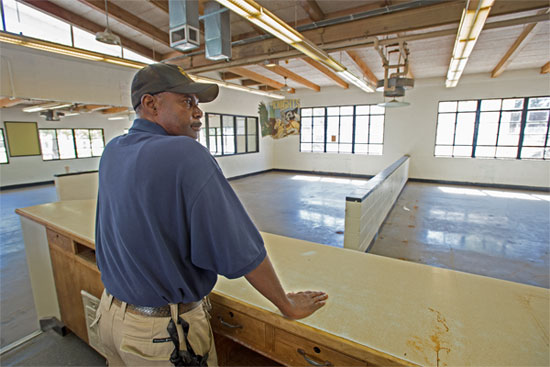
A probation official at the old central command center, where the camp's open dorms were supervised.
When bulldozers rumble into Camp Vernon Kilpatrick in Malibu, they will not only demolish an obsolete juvenile corrections facility but make way for an innovative approach to rehabilitating delinquent youths.
The Los Angeles County Probation Department is turning away from traditional methods that focused on control and punishment. Instead, it’s gradually adopting a model that emphasizes mentoring and a sense of community.
“It’s about building relationships and trust,” said Sean Porter, a director with the department’s Residential Treatment Services Bureau.
“There’s a saying: (the youths) won’t care what we think until they think we care about them,” Porter added. “The more time we spend with the youths, and convey compassion and genuine interest in them, the more they’ll listen to us.”
On Friday, probation officials, along with Supervisor Zev Yaroslavsky, will hold a ceremony to kick off the demolition of Camp Kilpatrick’s aging dormitories, classrooms and gym —only the kitchen and pool will be left intact — while plans for a modern facility are finalized. The project’s completion date is still to be determined.
Originally built as a barracks in 1962, Camp Kilpatrick had an institutional configuration, with bunk beds arranged in rows against cinderblock walls, exposed showers and toilets, and spaces designated for solitary confinement.
It was essentially a boot camp, and Porter believes such an approach tends to produce only short-term benefits
“It’s temporary,” he said. “Unless you change the way the youths think, you’re not going to change the way they behave.”
Probation Chief Jerry Powers is determined to reform the system by emulating some of the techniques used by Missouri’s Division of Youth Services.
The so-called Missouri Model puts youths in small groups with a more home-like—as opposed to jail-like—environment, supervised closely by supportive probation officers, social workers, teachers, psychologists and other professionals.
The approach has dramatically lowered juvenile recidivism rates in Missouri, and jurisdictions in New York, New Mexico, Washington D.C. and California’s Santa Clara County have created their own versions of it.
Powers’ $48-million vision for Camp Kilpatrick calls for tearing down the dilapidated dormitories and building cottages for “core groups” of 8-12 youths.
They would attend classes, eat meals, and engage in counseling sessions and other activities together. The cottages would be furnished with comfortable beds and other amenities, and have lots of natural light and fresh air.
In addition, there would be an on-site doctor’s clinic, daily nursing services and extended mental health clinician coverage—all unique to the Los Angeles Model.
Powers said the goal is to help the youths feel secure, while developing a sense of responsibility, accountability and community.
“Aligning the new facility with new treatment and educational approaches will translate to reduced recidivism, increased academic achievement, and better employment opportunities,” he wrote in a letter to the Board of Supervisors in May.
To date, the board has approved a $41-million budget for the project, about three-quarters of which has been raised through state grants.
Angela Chung, a policy associate with the nonprofit advocacy group Children’s Defense Fund, is excited about the proposed changes.
“I think this is a chance for Los Angeles to be ahead of the curve and move toward a more healing model,” she said.
Porter said if core groups are like a sports team—with their probation officer acting as their coach—Camp Kilpatrick already has a track record of success.
Its winning football team inspired the movie Gridiron Gang, with Porter portrayed by actor/wrestler Dwayne “The Rock” Johnson. Its basketball team almost won a regional championship, while the soccer program has produced a league MVP.
“We’ve used sports to teach self-discipline and the value of hard work, and to develop self-esteem,” Porter said.
“When the youths walked out of the camp and back into their communities, their shoulders weren’t slumped down and their head wasn’t hanging because they were able to accomplish something, and they knew they could do more.”
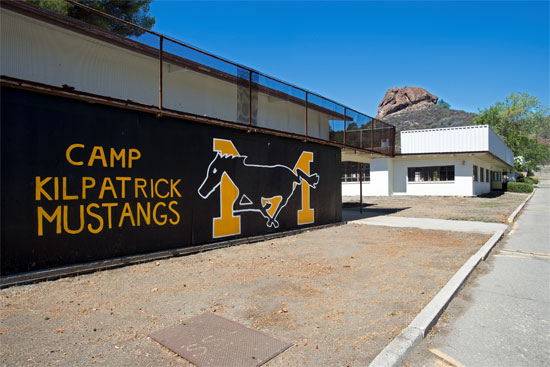
The vacant Camp Kilpatrick will be razed and replaced with a modern facility and a change of philosophy.
Posted 9/11/14
A peak accomplishment
September 11, 2014
Milt McAuley’s fingerprints are all over the Santa Monica Mountains. Soon, his name could be on one of the range’s most visible peaks.
Acting on a motion by Supervisor Zev Yaroslavsky, the Los Angeles County Board of Supervisors voted Tuesday to write the United States Board of Geographic Names in support of changing the name of Peak 2049 to “McAuley Peak.”
The motion is the latest boost to a campaign championed during the past several years by West Hills resident and avid hiker Coby King, who had long felt a special connection to McAuley. Before venturing onto a new trail, King would turn to McAuley’s landmark guidebook, Hiking Trails of the Santa Monica Mountains.
“Most hiking guides are really straightforward,” King said. “But his guidebook, you could hear his voice coming through in every hiking description. You could tell that the guy had a personality and that he loved the mountains.”
McAuley also authored and self-published other reference materials on the mountains, including a wildflower guide and a guide to the popular Backbone Trail, which transects the range from East to West and which he helped plot. McAuley’s books and advocacy for public acquisition of land in the Santa Monica Mountains drew scores of people to the area and generated a groundswell of support to protect the mountains from development.
Although King never met the conservationist, he said he did hike “just about every peak” in McAuley’s book. When the author died in 2008, King was moved to action.
“I felt like he deserved some kind of recognition for all that he had committed to the mountains,” King said. Out of all the hikes to peaks in his guidebook, “2049 was the only one that didn’t already have a name.”
The peak is situated right next to the Backbone Trail and is crested by a large sandstone rock visible for miles. King said the peak is an appropriate monument to a man whose work still looms over the mountains. Since applications to name geographic landmarks can’t be filed until five years after the person’s death, King, who serves as chairman of the Valley Industry & Commerce Association, used his government expertise to start building a case.
After securing the blessing of the McAuley family, he garnered support from elected officials and worked with environmental groups like the Sierra Club, which began calling the site McAuley Peak in their materials.
King is hopeful that the U.S. Board of Geographic Names will quickly approve the application so that the new designation will become official sometime next year. And that’s good news to the many friends and former associates of McAuley, who believe his contributions warrant the honor.
Jim Hasenauer met McAuley in the 1980s when he and some fellow mountain bikers were trying to convince local trail managers to allow them to use the trails. Some of the hikers were resistant, but McAuley—whom Hasenauer described as a gentle giant—was welcoming.
“He felt that people needed to experience the trails, sights, vistas, flora and fauna of the area and then we would appreciate it and die protecting it,” Hasenauer said, adding: “To go on a hike with him was like going to a graduate seminar in mountain ecology.”
Ruth Gerson, who worked with McAuley on the Santa Monica Mountains Trails Council and serves as the organization’s current president, said he was instrumental in naming trails and opening them up for public use. “He was a wealth of knowledge in the mountains,” Gerson said. “There was nobody that disliked him. And he could out-walk anybody—even in his late 70s.”
Bill McAuley, Milt’s son, said he’s never hiked the peak that could soon be named in his dad’s honor. But he certainly intends to hit the trail when, hopefully, McAuley Peak becomes a reality.
“I see the names in the Sierras and they’re all people who had something to do with the mountains,” Bill said. “He really did have a lot of influence.”
Posted 9/11/14
Mountain protections soon a reality
September 10, 2014
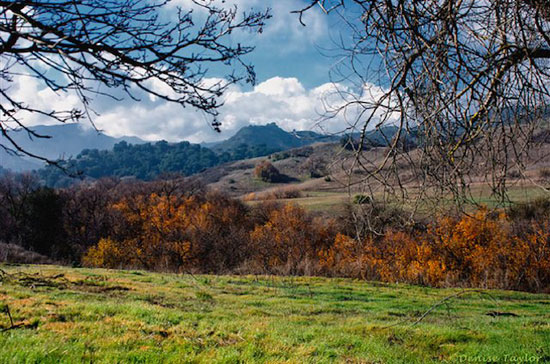
New development rules will keep the Santa Monica Mountains looking like this for future generations.
Culminating one of Los Angeles County’s longest-running environmental efforts, the Board of Supervisors on Tuesday gave final approval to a series of sweeping development restrictions that will preserve the Santa Monica Mountains as one of the nation’s premiere—and pristine—urban recreational treasures.
Passage of the Local Coastal Program (LCP) will protect an 80-square mile swath of environmentally sensitive land from construction that already has scarred some of the mountain region’s most scenic ridgelines and jeopardized fragile wildlife and plant habitats. The plan will preserve the flow of natural streams, outlaw certain rodent poisons and keep the night skies dark through tough outdoor lighting restrictions.
“We only have one Santa Monica Mountain range, and God isn’t making them anymore,” said Supervisor Zev Yaroslavsky, who vowed that the LCP will “protect one of the most beautiful mountain ranges in the state of California. It’s not the High Sierras, but then the High Sierras aren’t the Santa Monica Mountains, either.”
For nearly a decade, Yaroslavsky has championed the plan, alongside the county’s regional planning department and a broad coalition of organizations and individuals with a stake in the mountains.
During a public hearing Tuesday, the only opposition came from a handful of vintners, some of whom own vineyards in the Santa Monica Mountains above the Malibu coastline. They opposed a rule that, under the new plan, would ban the establishment of new vineyards because of their water consumption and the silt that can flow from them into natural streams, endangering wildlife.
Leading the vintners was Don Schmitz, who, in earlier hearings, had lobbied against the LCP’s rigorous new construction restrictions. Schmitz insisted that vineyards are as environmentally friendly as other forms of agriculture permitted under the plan and are a boon to the local economy.
The vineyards, he said, “bring hundreds of thousands of people into the Santa Monica Mountains to go on the wine tours, to go to local wine-tasting rooms, to go to restaurants featuring local wines.”
“It’s important for you to note,” Schmitz told the board, “that this is the Santa Monica Mountains National Recreation Area. It’s not Yosemite, which is a national park. It’s a recreation area.”
Yaroslavsky emphasized that the plan targets only new vineyards, not existing ones like those owned by Schmitz and the others who testified Tuesday. “Nobody is ripping out anybody’s vineyards,” he said.
“Nobody enjoys a glass of cabernet or merlot more than I do,” the supervisor went on to say. “But I have a lot of choices where to get my cabernet. I don’t have a lot of choices where I can see the Santa Monica Mountains National Recreation Area.”
The board approved the LCP by a 3-1 vote. Supervisor Michael D. Antonovich was the lone dissenter, arguing that the vineyard rules unfairly restrict property rights. Supervisor Mark Ridley-Thomas was absent for the vote.
The plan now faces only a final sign-off by the Coastal Coastal Commission, which gave it unanimous approvals in April and July after requesting several minor modifications. The restrictions are expected to go into effect this fall.
Posted 8/27/14
Rhapsody in blue
September 10, 2014
It was the kind of discovery that can rock a gem scientist’s world.
Eloïse Gaillou, an associate curator at the Los Angeles County Natural History Museum, started picking up social media chatter early this year about a 29.6 carat rough diamond found in South Africa.
She hardly imagined that just months later she would be on a team at the Smithsonian Institution conducting scientific tests on the rare diamond—now exquisitely cut to 12 carats and dubbed the Blue Moon for its exceptional color—let alone helping to host the super-stone’s visit to Los Angeles, where it will be on display in the museum’s gem vault from September 13 through January 6.
“We tweeted about it, we blogged about it, never thinking that it would come to us eventually,” Gaillou said.
The Blue Moon will join a collection of 240 colored diamonds called the “Aurora Butterfly of Peace” now on display at the museum.
“Putting those two collections together is really going to be an exceptional thing for the public to see. You won’t be able to see that many colored diamonds again in your life,” Gaillou said. “I’m sure we’re going to blow people’s minds.”
The idea for the temporary exhibition was launched, she said, after the owner of the Butterfly of Peace diamonds put her in touch with Cora International, the diamond firm that owns the Blue Moon. Cora International agreed to allow the museum to display the rare stone, whose distinctive color comes from traces of boron within its carbon structure.
It is likely to be the only public display of the diamond before it disappears discreetly into a private collection, Gaillou said.
Gaillou, who grew up in the Brittany region of France, has childhood memories of prospecting for fossils and minerals in local fields and on vacations with her parents in the Alps. As a geologist specializing in gemstones, she focused on sapphires for her master’s degree and opals for her doctorate, but became interested in diamonds when she pursued a diploma in gemology. It was at the Smithsonian, where she did nearly five years of post-doctoral work before joining the county’s Natural History Museum in 2012, that she began to turn her attention to rare pink and blue diamonds—“the ones that you don’t usually have the opportunity to study unless you are in a very special place that owns such diamonds.”
Even without glamorous visitors like the Blue Moon and the Butterfly of Peace passing through, Gaillou said the NHM’s gem collection is “amazing,” second only to the Smithsonian’s.
While she got a thrill from handling the Blue Moon during the scientific tests with her former colleagues at the Smithsonian last month, it’s clear that science—not jewelry—is this curator’s best friend.
She was most wowed by the Blue Moon’s red afterglow—“a good 20 seconds!”—after it was exposed to UV light. That kind of phosphorescence, she said, is usually associated only with the finest blue diamonds, like the Hope and the Wittelsbach-Graff.
“Diamonds, they’re pretty, don’t get me wrong. But from a scientific point of view, I just love studying diamonds. They give us a clue not only about the deep earth, but also the evolution of the earth from about 3 billion years ago until now,” she said. “You would be done looking at a diamond in about five minutes if you were just looking at its aesthetics. But from the scientific point of view, I have been working on them for over seven years now.”
Still, like a pastry chef who steers clear of macarons, Gaillou said she doesn’t indulge much in sparkling bijoux in her private life.
“I see so many beautiful things that I don’t even buy jewelry myself, or not much. I think it has probably killed it for me,” she laughed.
But she does get a charge out of walking through the museum’s gem exhibits on the way to her office each day, and overhearing the oohs and aahs from visitors.
She’s expecting to get quite an earful in the months ahead. Even though she has studied more than 100 diamonds, including legendary stones like the Hope, the Wittelsbach-Graff and the Blue Heart, she considers the Blue Moon exceptional.
“You never get tired of looking at big gems like that,” said Gaillou, 34. “There’s just something about this color. It’s something that you will never forget.”
“Some gemstones are just dead, and some gemstones are just alive. And definitely this one is alive. You see it. It’s just aglow. The cut is wonderful, the fire is amazing. After that, as to the personality of the Blue Moon, I think that everybody will have a different answer. You just have to come and see the diamond by yourself and make up your mind on that.”
Posted 9/4/14
Fishing for L.A. River fans
September 4, 2014
It may not rival TV’s Bassmasters, but Los Angeles is about to get a small taste of fishing glory.
This Saturday, advocacy group Friends of the L.A. River will host the river’s first-ever fishing competition. Anglers will test their skills at traditional and fly fishing at 9 a.m. before handing things over for a family fishing session at 10 a.m. Rods and reels will be provided. All fish will be released, but not before conservation biologist Rosi Dagit categorizes, weighs and measures each one.
“I have no idea what these folks are going to pull out,” said Dagit, who works for the Resource Conservation District of the Santa Monica Mountains. “Not much biological study has been done since the river was concrete-lined.”
The competition offers a chance to expand on a 2008 study that took the first look at the river’s aquatic life in decades, Dagit said. She expects to see species including carp, tilapia, black bullhead catfish and largemouth bass. Almost all are invasive, she said—native trout living upstream in tributaries haven’t been found in the waterway since the 1940s.
Fishing in the river was prohibited before 2011, when changes in state law opened up the activity to people with a fishing license. Saturday, however, is a “free fishing day”—meaning no license will be required to fish.
Jim Burns, a local fisherman who runs an L.A. River fly fishing blog, remembers being chased out by law enforcement when he first started dropping his lines. He said things have come a long way in the past four years. “When I started, it took me like an hour to actually find the river and find a way to get access to it,” Burns said.
These days, Burns sees more fish and more people. Plastic bag bans and cleanup efforts have made the water cleaner, and that’s been good for all species. He’s recently found reptiles, crayfish and plenty of fish, including an increasing number of white-sided bass, the exact identity of which remain a mystery to him.
That’s where Dagit comes in. As the river’s health continues to improve, she said there’s a good chance that what’s hooked Saturday will be different from what she found in 2008.
“It’s an enormous watershed and it has the potential to support a large population of all kinds of native fishes if we clean up things, restore banks and improve water quality,” Dagit said. “Fish are a touchstone to see how we are doing. They need cool, clean, oxygenated water. We’ve done a masterful job, but we’ve got a long way to go.”
More than anything, Dagit and Burns hope the competition gets people out to enjoy the river with their families. That, they said, is critical to the waterway’s future.
“People take care of things that they love, and they tend to love places that are special to them for one reason or another,” Dagit said. “It doesn’t get much more special than catching a fish with your kid on a Saturday morning in a beautiful place on the river.”
To join the fun, head to North Atwater Park, 3900 West Chevy Chase Drive, at 8:30 a.m. this Saturday, September 6.
Staging Grand Park’s biggest act yet
August 28, 2014
The pink furniture is being packed off to storage. The splash pad is disappearing under a protective mat. The street closure notices have been circulating for a week and a security detail of more than 1,000 has been assembled.
With Grand Park scheduled to welcome its biggest crowd yet this Labor Day weekend, local authorities have mustered a similarly impressive response to gear up for Budweiser Made In America, the two-day downtown music festival being curated by Jay Z and promoted by Live Nation.
“There are a lot of headline acts and they’re expecting more than 30,000 people each day,” explained Christine Frias, a program manager in the county CEO’s office who is coordinating the departments involved in the deployment.
“I think, with the help of Grand Park, the Sheriff’s Department and all the collaboration that’s going on, this event will be successful. “
Still, she notes, “you have to take extra precautions when there’s going to be alcohol.”
Preparations for the August 30-31 festival have been the talk of the town since April, when Jay Z and Los Angeles Mayor Eric Garcetti announced that the bicoastal music festival would be held this year in downtown’s most popular new park.
Though Grand Park has seen some grand crowds—about 20,000 gathered there for its first New Year’s Eve bash, for instance—they have mostly been free to the public and explicitly family friendly.
And peaceful: Frias said the more than 10,000 people who gathered there for July 4 music and fireworks were so well behaved that none of the park’s plants or furnishings had to be replaced.
But the Budweiser MIA concert is the first attempt to use the 12-acre space as a venue for a major ticketed rock concert, and—though neither Jay Z nor his superstar wife, Beyoncé are among the acts on the lineup—this event is expected to be a doozy, with Kanye West, John Mayer and other big names on the roster. More than 30 bands are expected to play over the festival’s two days.
Three stages, an amusement park ride and an exhibition skate park will dot the lawns between City Hall and the Music Center, and 40 to 50 food trucks will ring the venue. And while all ages will be welcomed, the festival site will allow beer drinking at more than a half-dozen public and VIP beer gardens.
“It’s going to be a couple of long hot days, and hopefully people will mostly consume water, but we are concerned about alcohol consumption,” said Los Angeles Sheriff’s Capt. Chuck Stringham.
About 270 sheriff’s deputies and a similar number of Los Angeles police are expected to be deployed on each day of the festival, along with several dozen Music Center security officers and an unknown number of undercover officers who will be enforcing laws against underage drinking for the state Department of Alcoholic Beverage Control.
Another 370 private licensed security guards are expected to be on hand at the behest of the acts themselves and the concert promoter, according to a spokeswoman from Garcetti’s office. The Sheriff’s Department will handle security within the event perimeter and LAPD will be in charge outside.
Alcohol will be permitted only in the beer gardens, and patrons will be limited to two beers at a time and required to produce valid photo I.D.s, he said, adding that attendees will not be allowed to exit and re-enter the venue.
Frias said the park itself will be braced for the masses. Grand Park is owned by the county and operated by the Music Center, although the surrounding streets are mostly the jurisdiction of the City of Los Angeles. Live Nation is paying $500,000 to the city to cover its costs and $600,000 to the Music Center to cover park rental and county services.
But the promoters must pay extra for any damage, and more than 300 workers per day have been on the site this week, spending an average of 15 hours a day to assemble about 100 tractor trailers’ worth of equipment, according to a spokesman for Live Nation.
Videographers have been filming the lush grounds all week, she said, to establish the park’s pre-festival condition, and the park’s signature hot pink furniture has been stored for safekeeping.
Vulnerable landscaping is being cordoned off with temporary fencing. And, she said, the splash pad around the Arthur J. Will Memorial Fountain also is getting a custom buffer to protect it from a stage that is being installed over it for the festival deejays.
“The splash pad will be turned off and dried, and then they’re putting a 4- to 5-inch rubberized mat on it to cover it and distribute the weight of the equipment on top of it,” said Frias.
Outside the Lines, the construction firm that helped build the splash pad, will oversee the construction to ensure that none of the festival preparations damages the water feature or surrounding tile and LED lights, she said.
Perhaps the trickiest set of preparations is for festival traffic. Already, various downtown streets have been closed this week for delivery of production equipment and stages. (Most of the work has gone on overnight).
Though ticket sales are not as high as the initial daily estimates of 50,000, the crowds are still expected to set records for Grand Park, and organizers have spent months reassuring downtown residents and business owners that the area won’t be inundated.
“But we’ve had major closures in the downtown area before—we know how to do this,” said Aram Sahakian, who oversees special traffic operations for the city Department of Transportation.
On the Fourth of July, for instance, he noted, thousands cars were swiftly ushered in and out of downtown parking structures by traffic control officers who patrolled the park area on foot and on Segways.
“And how about Fiesta Broadway? That used to bring in hundreds of thousands of people,” Sahakian said.
Organizers are urging concertgoers to take public transportation, Sahakian said, and between 7,000 and 10,000 are expected to ride mass transit into the venue. But the Civic Center station—which opens directly into Grand Park—will be closed so that riders can’t bypass the ticket-takers, and to accommodate safety concerns.
Though the Civic Center station does have a second entrance outside the perimeter of the festival, event organizers and law enforcement insisted that the whole station be closed because the bottleneck that would have resulted from channeling thousands of riders at one time into one exit might have overcrowded the platform and created a safety hazard, said Metro spokesman Marc Littman.
So subway riders are being urged to get off at Pershing Square or Union Station and walk the few blocks to the venue.
Meanwhile, Sahakian said, those who drive will be directed to downtown parking garages, though some may have to park as far from the venue as Staples Center or Dodger Stadium, and ride in on shuttles. Extra traffic engineers and traffic control officers will be on hand to help channel traffic toward open parking structures, he said.
“Yes, this is a first time thing for the park, but we’re prepared,” he said. “Hey, we moved the Space Shuttle, right?”

Budweiser Made in America curator Jay Z performing earlier this year with event headliner Kanye West.
Posted 8/28/14




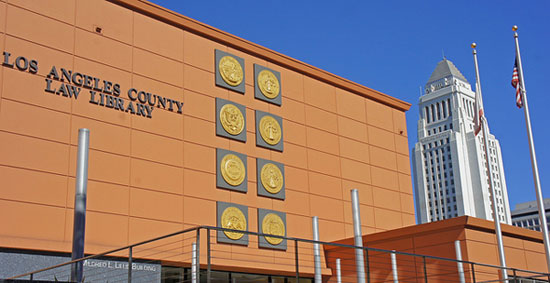


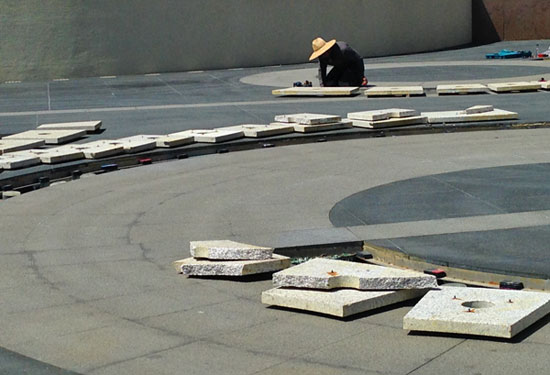
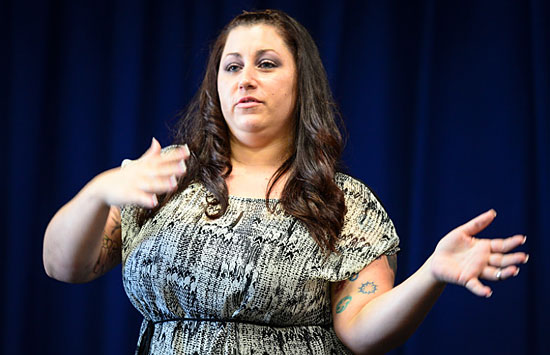
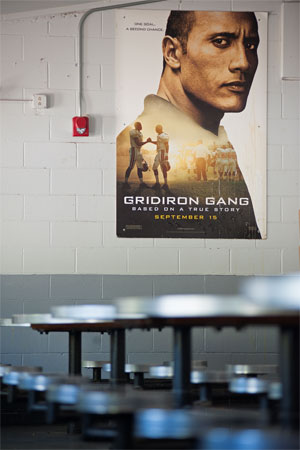
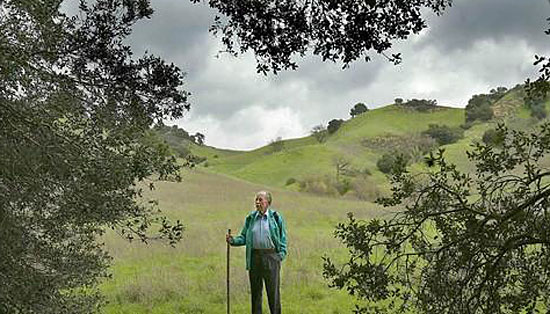
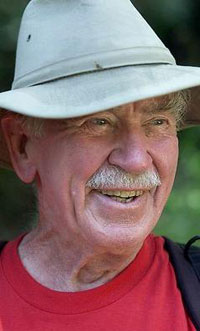
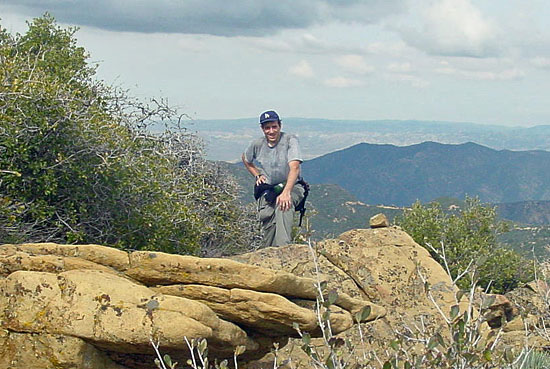
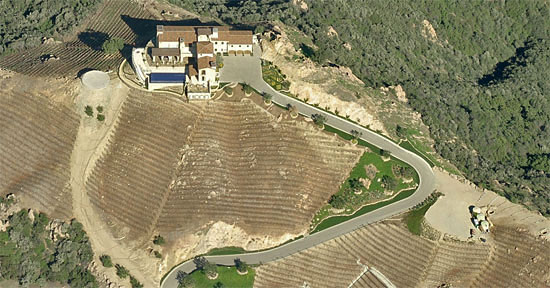
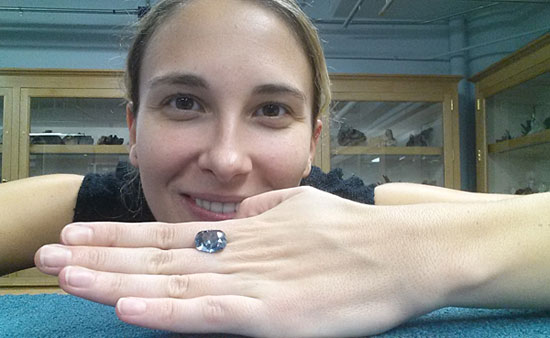








 Check for the latest closure information
Check for the latest closure information








